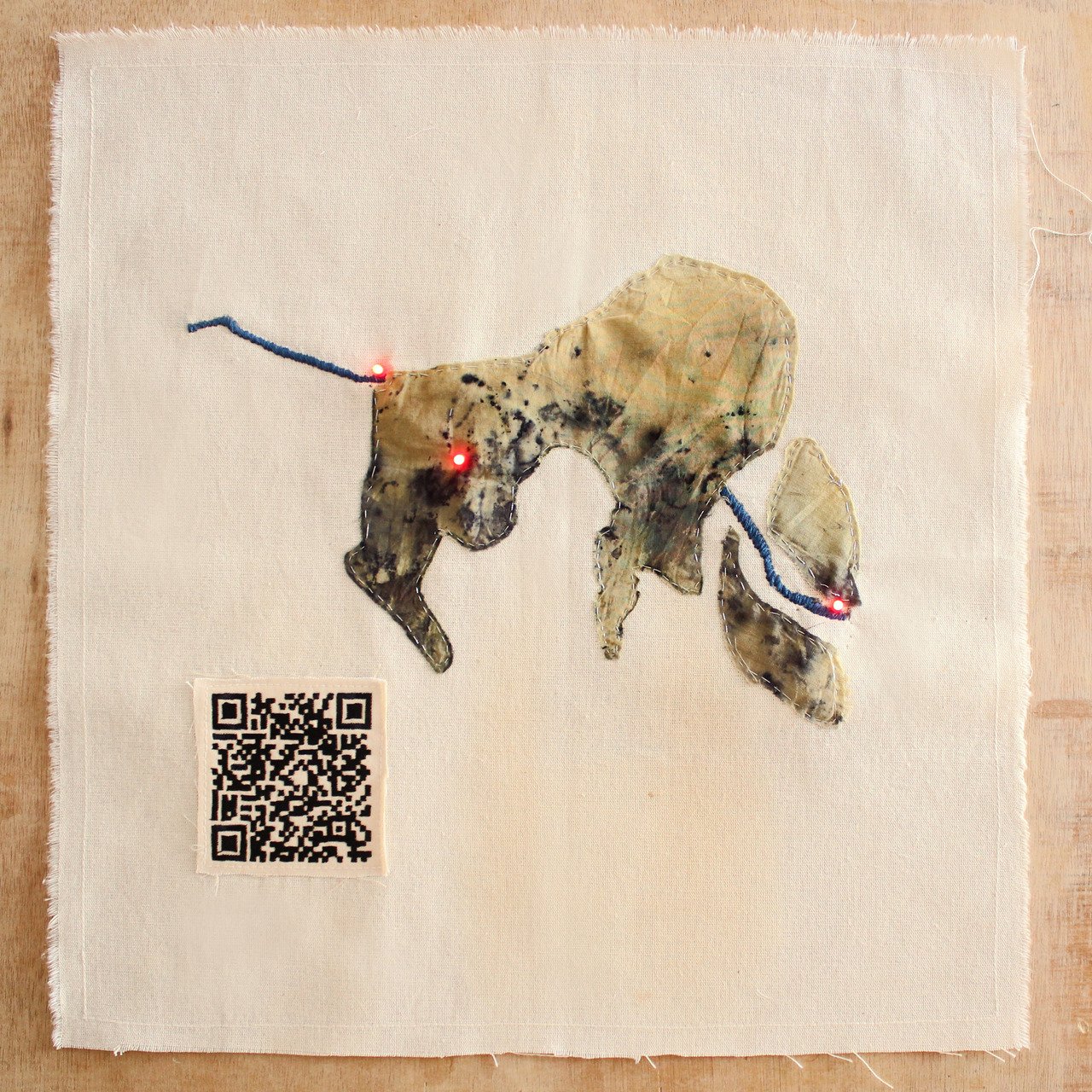Projects
CARTOGRAPHY
PROJECTS
Over the past decade, my work has focused on studying textile objects as social metaphors, incorporating electrosensitive materials and natural prints. This exploration delves into themes such as violence, environmental racism, earth democracy, and eco-feminism, all interconnected in the border geopolitical context.
In researching materials, I discovered those integral to the border identity, emphasizing reuse. Electric components hold personal significance, given Juarez's numerous factories (up to 670) producing accessories and electrical appliances. Additionally, I began exploring botanical colors five years ago, uncovering over a hundred color ranges. These colors, a gift of our mother’s sacred technology, reflect techniques used by ancestral pre-Hispanic cultures.
The resulting textile objects aim to urgently communicate and raise awareness about the challenges faced in border communities, addressing issues of frustration, exploitation, and precariousness.
Acuifier Cartographies
This textile exploration places a particular focus on the nuances of water, highlighting the interconnectedness of present-future basins and sub-basins that traverse the territory.
border Cartographies of species and colors
The "Border Cartographies of Precariousness" series comprises graphic and symbolic representations that explore the relationship between border spaces and environmental and political issues. Symbolic elements interconnect to reveal detailed information about endangered species, landscape degradation, and resource exploitation.
ELLAS TIENEN NOMBRE Cartographies
As the geographic border becomes the focus of a dangerous political climate, the role of the artist as cultural producer and protector becomes fundamental in our struggle for justice.
HUIPIL DIGITAL
Between 2019 and 2020, I engaged in a battle against a Canadian mining company aiming to establish operations in the Samalayuca desert, encroaching upon a protected natural area in the Chihuahuan Mexican desert. This experience prompted deep reflections on the repercussions of voracious capitalism, which daily annihilates countless ecosystems.
Collaborating with architects from Atlas Materia Prima, we created a photographic archive depicting the aesthetics of exploitation. This visual material was used to craft digital textures projected onto the huipil through visual mapping. Working with red clay and utilizing large-scale dyeing techniques enriched the textile with a brick color, aligning seamlessly with the work's concept. This approach offered a gratifying alternative to chemical pigments that pollute water.
COLORES BOTÁNICOS DE MÉXICO
In response to the environmental impact of the fashion industry, I have embarked on a mission to document an extensive array of natural pigments derived from plants and minerals found in Mexico, my home country. Establishing an archive of these colors serves not only to showcase consumption alternatives but also underscores the future of fashion rooted in conscientious production methods.
Mapping the Mexican land to identify over fifteen plants historically utilized by pre-Hispanic cultures revealed a reservoir of ancient knowledge. This historical juncture demands a concerted effort to address the global environmental crisis, recognizing that the very practices implemented by ancient societies worldwide are starkly contrasted by the consequences of industrialization and over-exploitation.







